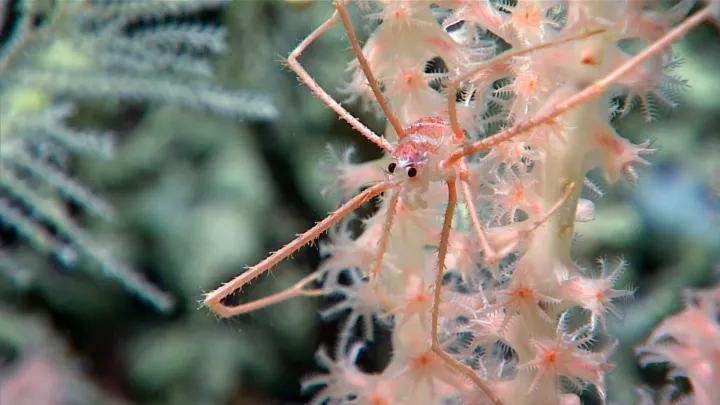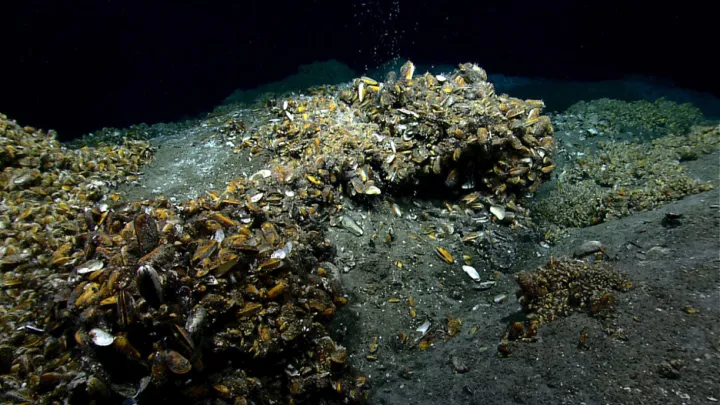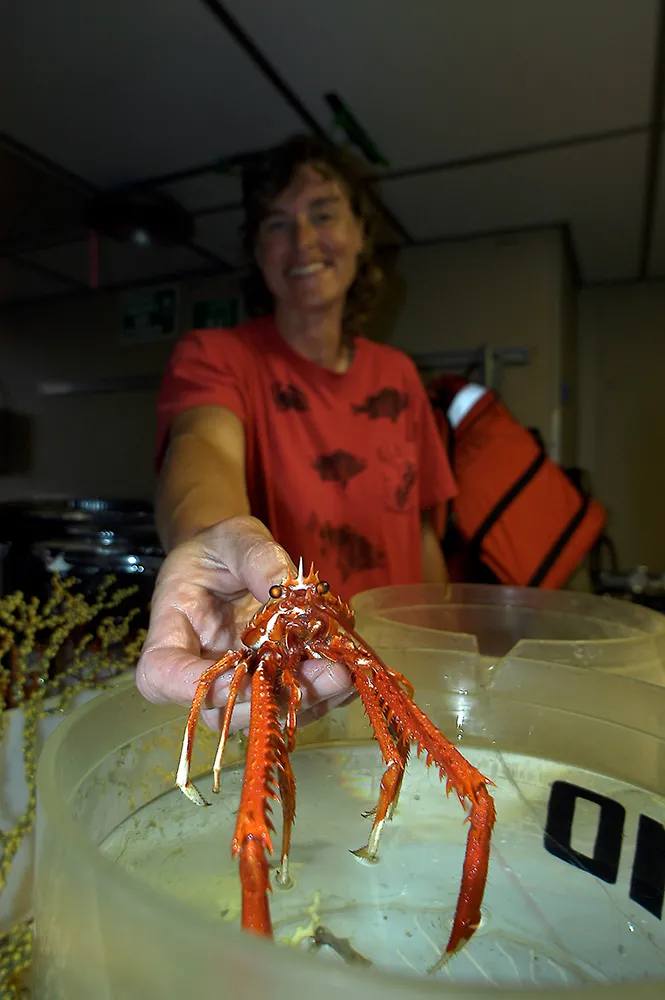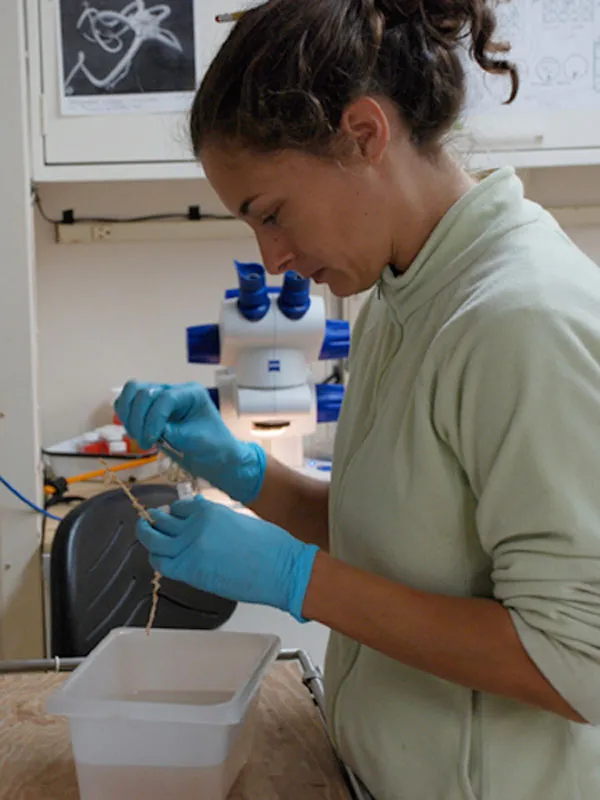Optimism in the Deep Sea - Connecting Corals, Museums, and Ocean Managers
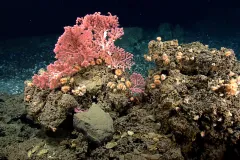
The deep-sea is a treasure trove of resources. Diverse ecosystems cozy up next to extensive deposits of valuable minerals, making it a life-line for global fisheries and a potential new source of rare-earth materials.
The growing global interest in deep-sea resource extraction poses a challenge to sensitive deep-sea habitats—many of which remain to be discovered and studied by scientists. Along the US eastern seaboard, plans for offshore hydrocarbon exploration and extraction sparked an intensive effort to survey, map, and manage deep-sea ecosystems in 2017.
This effort, project DEEP SEARCH, is partnering Smithsonian, academic, and federal scientists with management professionals to explore the deep—building tools to balance the needs of industry and ocean ecosystems.
Diving into the Unknown
The majority of the deep sea remains unexplored. The extreme nature of this habitat, with its crushing pressure, darkness, and intense cold, makes it a harsh place to live and an even harsher place to visit. Yet the deep sea continues to surprise scientists with its abundance of life, like the 85-mile long coral reef discovered by the DEEP SEARCH team in August 2018.
“At the fundamental level, we are still learning what species live where, collecting and describing new species, and documenting new range extensions – all basic biodiversity characteristics,” explains Dr. Andrea Quattrini, Curator of Anthozoa with the Smithsonian and a coral taxonomic specialist for the DEEP SEARCH project.
In addition to building a foundation of knowledge about deep-sea ecosystems, the DEEP SEARCH team is hoping to protect these habitats in the process. Extraction of resources in the deep, including fish, oil and gas, and precious metals, has the potential to disturb ecosystems through habitat destruction, sediment suspension, or chemical release. When considering which areas to protect and which areas to designate for resource exploration, it’s essential to understand where ecosystems are thriving and how sensitive they are to perturbations.
The team aims to build habitat maps of deep ocean ecosystems that will allow managers to predict where these sensitive ecosystems, like deep-sea coral beds, might exist. Using coral specimens collected from the two DEEP SEARCH cruises in 2018 and 2019, Quattrini is looking into a key component of ecosystem management—a term scientists call connectivity.
Deeper Connections
The deep-sea is a naturally patchy environment, with dense groups of organisms cropping up around geological structures like canyons and cold methane seeps. These structures provide necessary hard substrate for corals, mollusks, and other sessile animals to attach. They are often separated by large stretches of muddy or sandy terrain, often uninhabited by corals.
Deep-sea ecosystems rely somewhat on the exchange of organisms between these patches to sustain populations. Understanding this dynamic exchange between populations (connectivity), allows scientists to predict population growth and survival. In addition, scientists can use connectivity to determine how resilient a population is to disturbance.
A disturbance to one population in the deep could have far-reaching impacts, potentially removing a historical source of new organisms for a neighboring population, thereby decreasing the neighboring population’s ability to recover from disaster itself. The clear benefits of knowing connectivity information has led to an increased focus on incorporating this metric into ocean management plans when drawing the boundaries for marine protected areas or other sensitive habitats.
“It all comes back to conservation of these habitats and whether it’s better to preserve many small areas or a few larger areas, and the connectivity aspect helps us answer that question,” explains Martha Nizinski, a researcher with NOAA and the Smithsonian, who studies connectivity within invertebrates found living on deep-sea corals.
Using a technique called RADseq, a next-generation sequencing method that doesn’t require a prior known genome for analyses, Quattrini is tracking connectivity in the deep by examining gene flow—a measure of how genes are moved between populations. With samples collected on DEEP SEARCH cruises, Quattrini can determine the genetic similarities between geographically separated populations of corals and other invertebrates and how frequently they are exchanging genes.
Broadening the Search with Museum Collections
With DEEP SEARCH specimens, Quattrini is also teasing apart species boundaries and understanding the overall drivers of diversity in deep-sea corals. She plans to extract DNA from specimens already held at the National Museum of Natural History from deep-sea coral communities. These DNA samples will be used to aid in species identification and population connectivity studies. With the vast Smithsonian collections, connectivity questions can be broadened to include species other than coral.
Nizinski, an authority on invertebrates that live in association with deep-sea corals, has been building the Museum’s deep-sea invertebrate collections for years. With her taxonomic expertise, Quattrini’s genetic techniques, and Smithsonian collections, the researchers are investigating deep-sea connectivity across a broader scale than could be covered by the DEEP SEARCH cruises alone.
“We still have a lot to learn,” cautions Nizinski, “and as fishing, mining, and other industries are moving further offshore, we really need to know what’s out there so that we can better try to protect, conserve, and manage our marine ecosystems and resources.”
The DEEP SEARCH project is a partnership between the Bureau of Ocean Energy Management, the U.S. Geological Survey, and the National Oceanic and Atmospheric Administration.


